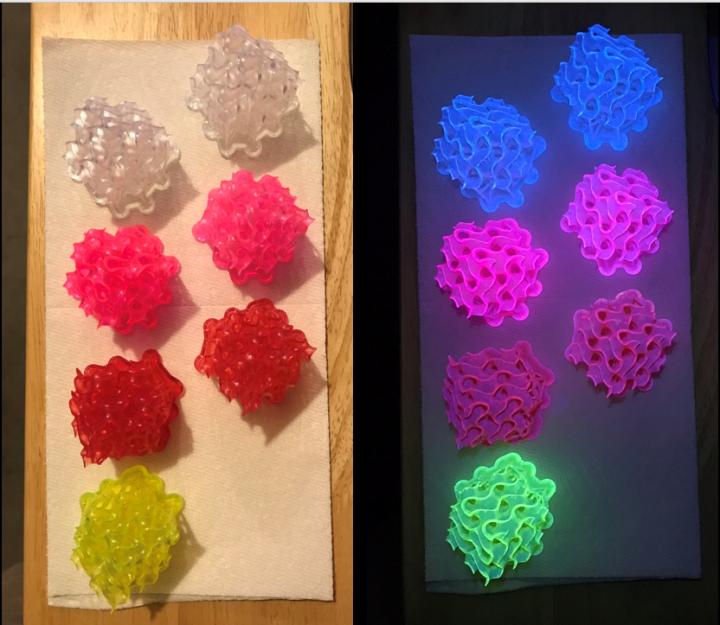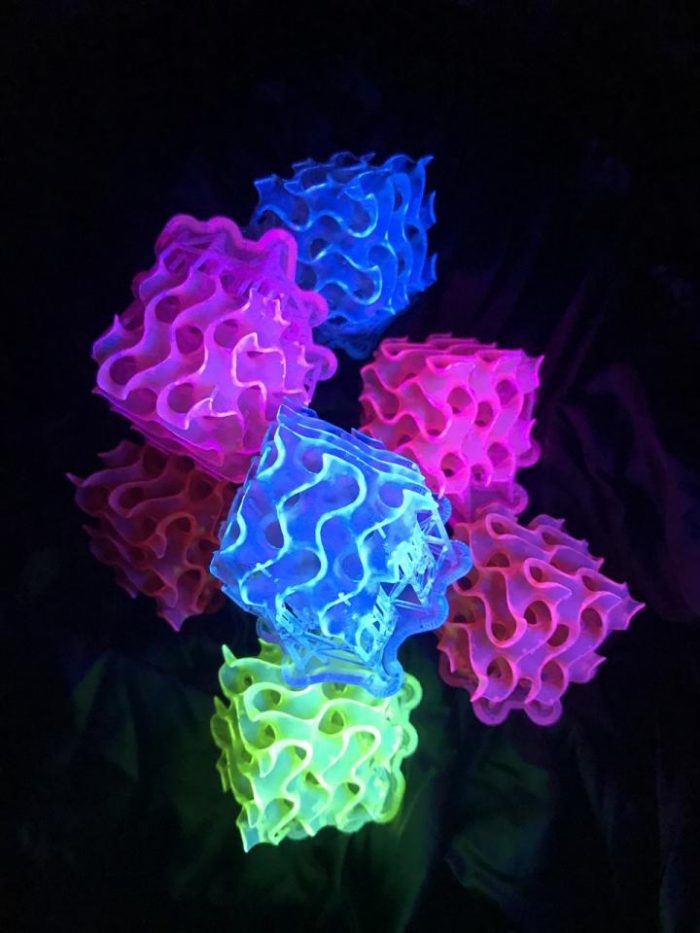Fluorescent molecules are one of nature's most brilliant phenomenon. Literally!
These molecules absorb light radiation, then re-emit it as a lower energy wavelength. The result is the kind of light that we generally call a 'glow'. It's not like a light bulb, so bright that you can't stare at it head on. But it's definitely noticeable and vibrant, especially in total darkness.
As a dye, or liquid, you can find fluorescents used in products like highlighters, clothing, and OLED TVs. But a funny thing happens when you try to turn a fluorescent liquid into a solid object. It undergoes something called quenching. This means it loses its brilliance, as well as changes colour—what was once glowing becomes just sort of, meh.
Until now, that is.
A groundbreaking new experiment out of Indiana University has created the until-now impossible: fluorescent solid shapes!
Keep your hands to yourselves

Neat-o! (Amar Flood)
To do this, researcher Amar Flood had to solve a well-known problem, known as exciton coupling. Here's what that is.
As the fluorescent liquid is converted to a solid, the molecules settle closer together, or couple. As Amar explained it to EurekAlert!, "They cannot help but 'touch' each other. Like young children sitting at story time, they interfere with each other and stop behaving as individuals."
This touching is what dims the overall glow of the molecules. Generally, fluorescent dyes just didn't work once converted to solid things. So how did Amar fix this?
With a smile, of course. Or rather, SMILES.
Okay everyone, SMILES!

The fluorescent solids under normal light (left) and UV, or ultraviolet, light. (Amar Flood)
SMILES stands for small-molecule ionic isolation lattices. That is a mouthful. But if you break it down, you can see what it does.
Amar and his team combined the flourescent dye with a colourless cyanostar solution. This solution contains star-shaped molecules that create barriers between the fluorescent molecules. The small molecules of dye are isolated from each other by lattices of cyanostar. (A lattice is series of overlapping lines like on a chain link fence.)
And bingo. As the solid shape is formed, the SMILES stop the fluorescent molecules from touching each other. And because the cyanostar solution is clear, the dye can still glow.
As for what these fluorescent solids will be used for, that's still to be decided. But when you see them, they might just make you smile!
 Witness the magically glowing 3D-printed structures made with a new technology: SMILES! (Amar Flood)
Witness the magically glowing 3D-printed structures made with a new technology: SMILES! (Amar Flood)









